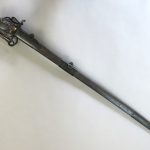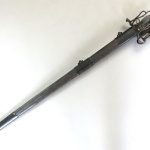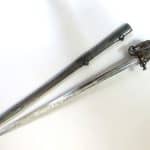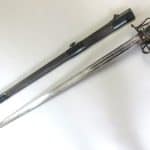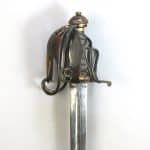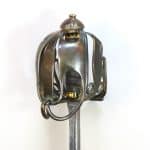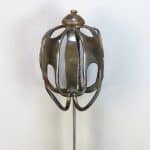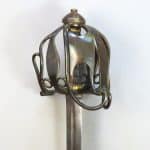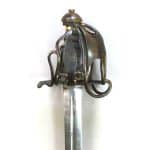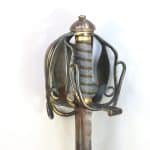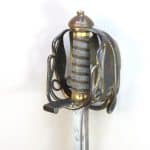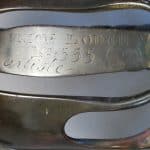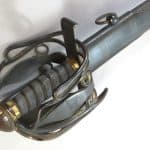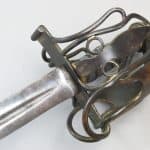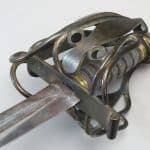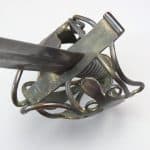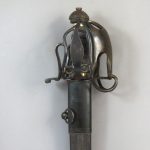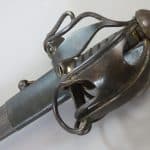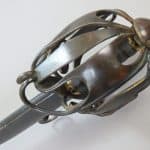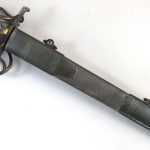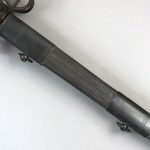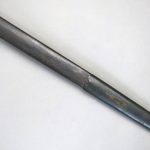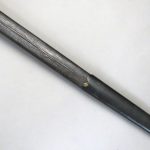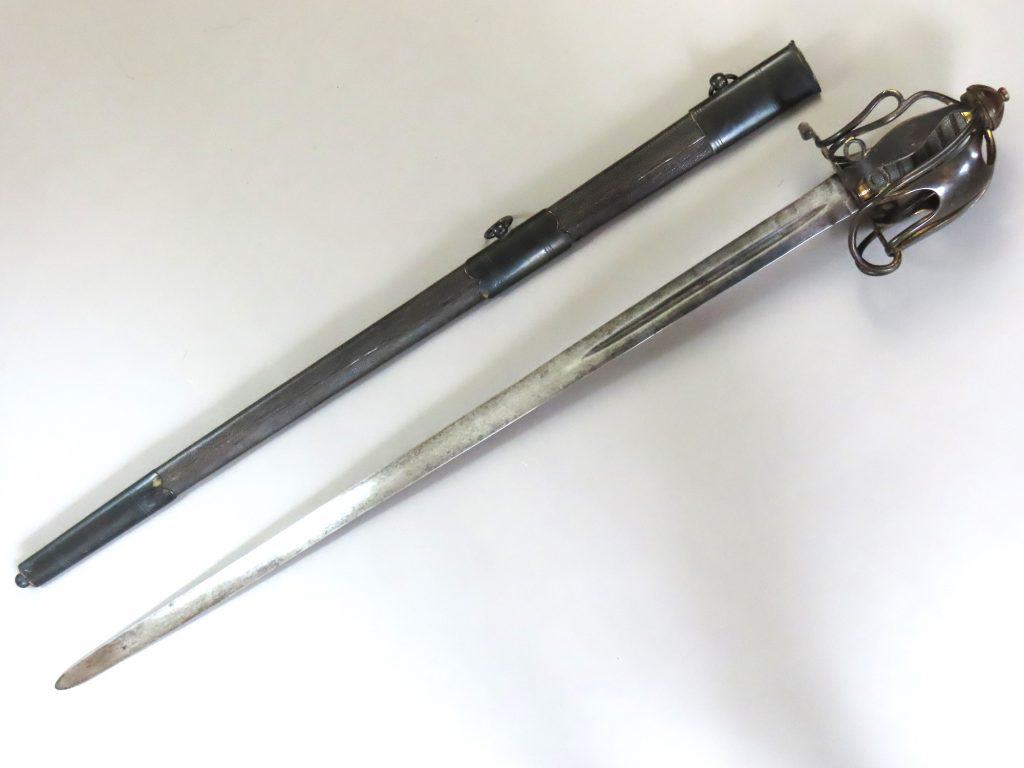
A Fine 1798 Pattern Scottish Highland Infantry Officers’ Sword with Original Scabbard
To enquire about this itemplease click here
Price: £3,250
Ref: 42021871
Item Description
A fine example of the distinctive basket hilted sword introduced for Scottish Infantry officers in Highland Regiments in 1798. It was replaced by the regulation steel basket hilt 1828 pattern three decades later. The sword type was used throughout the Napoleonic War period. This sword is in fine original uncleaned condition and retains its scabbard. The bronze hilt and scabbard mounts were once covered with a gilt finish much of which has now worn away or is hidden under the patina. An inscription on the knucklebow reads “UNION LODGE NO 555 Carlisle”. It would seem that at some time the sword was gifted to the Masonic Lodge in Carlisle. Carlisle is an English town near the Scottish border.
The hilts of these swords were most usually made of gilt copper, bronze or brass. The hilt of this sword is of gilt bronze and made of rounded bars and flattened plates in the usual manner with forward loop guards and a swollen solid wrist guard terminal extending from the rear quillon. The upper terminals of the guard arms are fixed onto a ring inside which the stem of the mushroom shaped pommel is fitted. The pommel is dome-shaped with a large separate waisted pommel button on top from which four sets of decorative grooves flanked by narrower lines radiate to the pommel edge.
The double-edged gently tapering blade is 32.75 inches (83 cm) long and in fine condition. Typically it is of lenticular section with a short ricasso. A central fuller commences a short distance from the hilt on each side and is 9 inches (23 cm) long. The blade is unmarked and probably a German import which was the norm for this sword type and most probably of Solingen manufacture.
The grip is of spirally grooved wood covered with shagreen held in place with thin ropes of twisted copper wire flanked with plainer thinner wire now coloured with age. It is mounted with gilt bronze ferrules top and bottom which are incised with decorative lines.
The scabbard is in fine condition made with a wooden core covered with granulated leather stitched along the middle on one side. The mouthpiece and middle band retain their ring carrying mounts. The chape has a knopped terminal.
For other examples of the 1798 type see: Harvey J S Withers, “The Scottish Sword 1600-1945”, Paladin Press, 2009, pages 13 to 151 and Cyril Mazansky, “British Basket-Hilted Swords”, Boydell Press, 2005, pages 131 to 133.
